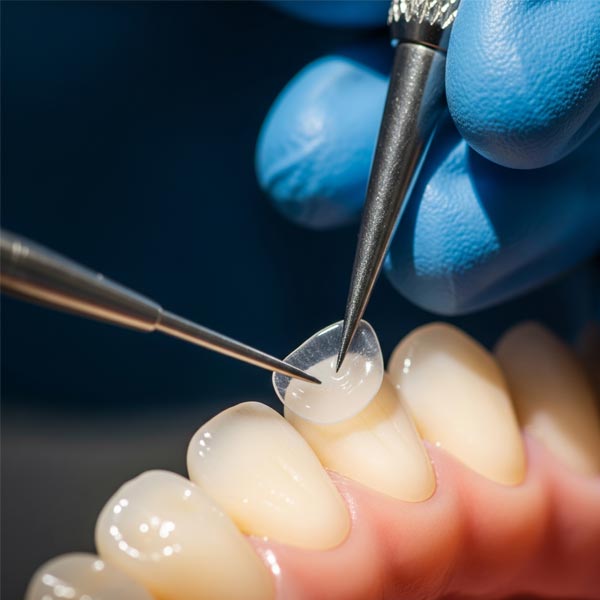Veneers
Dental veneers are custom-made shells that fit over the front surfaces of your teeth. They conceal cracks, chips, stains and other cosmetic imperfections
Who needs dental veneers?
Anyone who wants to enhance the appearance of their smile can explore veneers. These dental restorations can camouflage
- Chipped or broken teeth.
- Diastema (gaps or spaces in your smile.
- Stains that don’t improve with teeth whitening.
- Teeth that are too small
Veneers vs crowns: What’s the difference?
A porcelain veneer only covers the front surface of a tooth to enhance its appearance. A dental crown, on the other hand, covers the entire tooth structure to add strength and protection.
Types of veneers?
Composite veneers
Your dentist uses a tooth-colored composite resin — the same material used for dental bonding — to achieve the desired results
Porcelain veneers
These restorations are custom-made to fit your dental anatomy. Before placement, your dentist must remove some enamel from your natural teeth. This roughens your teeth surfaces and helps your new veneers stay in place.
No-prep veneers
No-prep or minimal-prep veneers are a less invasive option. Like traditional porcelain veneers, no-prep veneers are custom-made for your smile. However, they require less enamel removal than traditional veneers
Removable veneers
Removable veneers — also called pop-on veneers or snap-on veneers — cover your natural teeth to hide imperfections. Like retainers, you can take removable veneers out anytime. Removable veneers can enhance your smile — but they can make it difficult to eat, and they could have a negative impact on your speech.
Procedure Details
During your initial appointment, your dentist will examine your teeth and gums to determine if you’re eligible for veneers. If you’re a candidate, they’ll prepare your teeth by removing small amounts of enamel. Next, they’ll take impressions of your teeth. A dental lab technician will use these impressions to make your custom veneers. (If you choose composite veneers, dental impressions aren’t needed.)
During a second office visit, your dentist will check the shape, color and fit of your veneers, then permanently bond them into place using dental cement. Finally, they’ll check your bite and make any necessary adjustments.
Are veneers permanent?
On average, dental veneers last between 10 to 15 years with proper care and maintenance.
Pros
- Easily Whiten Your teeth. If you’re looking for an easier way to whiten your smile for good, dental veneers may be a great fit for you. Veneers are mostly stain-resistant.
- Fix Minor Cosmetic Problems Veneers can fix chips, cracks, gaps between teeth, minor misalignment and/or discoloration — they help correct many cosmetic dental issues.
- Replace Damaged Enamel. The stomach acid associated with acid reflux disease can alsodamage your enamel .can be replaced with veneers
Cons
- High Cost The price of veneers will vary based on your location., they are often expensive.
- Increased Sensitivity Some people experience an increase in tooth sensitivity after getting veneers. Tooth sensitivity can be uncomfortable and inconvenient, but you can manage it with right products.
- It’s Irreversible Your dentist will need to change the structure of your natural teeth to place them properly.
Dental veneers are an excellent way to hide discolored, crooked or damaged teeth, but it’s important to consider the pros and cons that come with the territory before getting them. Make an appointment with your dentist to find out if dental veneers are the right solution for improving confidence in your smile






